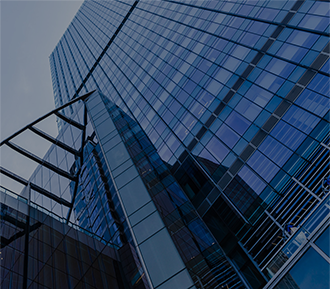

With the continuous development of the aluminium product processing industry, aluminium hard oxidation is more and more widely used in the industry by anodizing or chemical oxidation of aluminium profiles to form an oxide film on the surface of aluminium and aluminium alloy parts to achieve protective decoration. the goal of. Although aluminium and aluminium alloys can naturally form an oxide film in the atmosphere, the film is thin (40-50A) and loose and porous. It is an amorphous, non-uniform and discontinuous film layer, which cannot be used as a reliable protective decoration. film layer.
The surface of aluminium alloy profiles is generally treated by electrochemical oxidation (ie, anodizing) or chemical oxidation to form an oxide film on the surface of the profile, so as to achieve the role of protection and decoration.
The thickness of the oxide film obtained by chemical oxidation treatment of aluminium profiles is generally 0.3~4μm, and its softness, wear resistance and corrosion resistance are lower than that of the anodic oxide film. Therefore, except for special purposes, it is rarely used alone. However, it has good adsorption capacity, and repainting its surface can effectively improve the corrosion resistance and decorative properties of aluminium products.
The thickness of the oxide film obtained by anodizing the aluminium profile is generally 5~20μm, and the thickness of the anodized film of the hard aluminium profile can reach 60~250μm. Its oxide film has the characteristics of high hardness, good corrosion resistance, good insulation, heat insulation performance and strong adsorption capacity. Therefore, it is widely used in the surface treatment of aluminium and aluminium alloy products.
1. It has good insulation properties. The anodic oxide film of aluminium and aluminium alloy aluminium profiles no longer has the conductive properties of metal, but becomes a good insulating material.
2. It has strong adsorption capacity. The anodic oxide film of industrial aluminium profiles of aluminium and aluminium alloys has a porous structure and has a strong adsorption capacity. Therefore, filling the holes with various pigments, aluminium profiles, lubricants, resins, etc. can further improve the protection, insulation, wear resistance and wear resistance of aluminium products. decorative properties.
3. Strong thermal insulation and heat resistance. This is because the thermal conductivity of the anodized film of aluminium profiles is much lower than that of pure aluminium. The anodized film of aluminium profiles can withstand temperatures around 1500 °C, while pure aluminium can only withstand 660 °C. To sum up, the oxide film formed on the surface of aluminium and aluminium alloy after chemical oxidation treatment, especially the anodization treatment of aluminium profiles, has good protection, decoration and other characteristics. Therefore, it is widely used in aviation, electrical, electronics, machinery manufacturing and light industry.
4. High hardness. The hardness of pure aluminium oxide film is higher than that of aluminium alloy oxide film. Usually, its hardness is related to the alloy composition of aluminium and the technical conditions of the electrolyte when the aluminium profile is anodized. The anodized film of aluminium profiles not only has high hardness, but also has good wear resistance. In particular, the porous oxide film on the surface layer has the ability to adsorb lubricants, which can further improve the wear resistance of the surface.
5. It has high corrosion resistance. This is due to the high chemical stability of the anodized film of aluminium profiles. After testing, the anodic oxide film of pure aluminium aluminium profile has better corrosion resistance than that of aluminium alloy. This is because the inclusion of alloy components or the formation of metal compounds cannot be oxidized or dissolved, so that the oxide film is discontinuous or voids are generated, thereby greatly reducing the corrosion resistance of the oxide film. Therefore, the film obtained after anodization of aluminium profiles must be sealed to improve its corrosion resistance.
